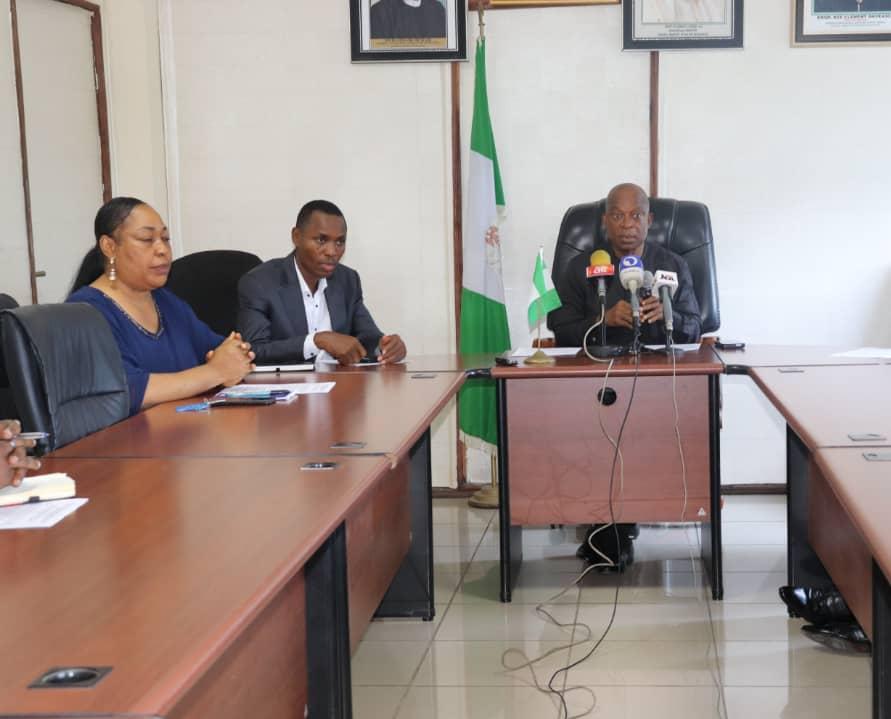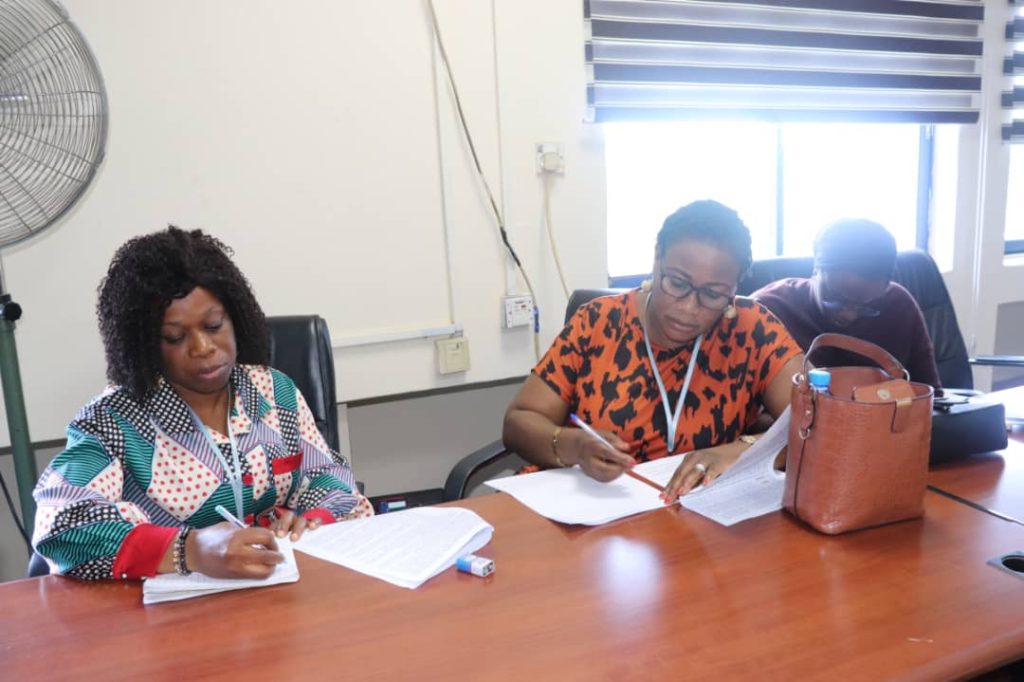 The Director General, Nigeria Hydrological Services Agency (NIHSA), Engr. Clement Nze, FNSE, FNAH, at the Press Briefing held today 7th September 2022, called on States and Local Government Councils to intensify and step up efforts towards averting floods in their domains as the nation is in the peak of the flooding season.
The Director General, Nigeria Hydrological Services Agency (NIHSA), Engr. Clement Nze, FNSE, FNAH, at the Press Briefing held today 7th September 2022, called on States and Local Government Councils to intensify and step up efforts towards averting floods in their domains as the nation is in the peak of the flooding season.
The DG, further stated that the 2022 Annual Flood Outlook, (AFO), presented by the Honourable Minister of Water Resources, Engr. Suleiman H. Adamu, FNSE, FAEng, in May this year is categorized into three (3) different Scenarios for the duration of the rainy season.
“Seasonal Flood Outlook for the month of April, May, and June (AMJ) as Scenario I, Seasonal Flood Outlook for the months of July, August, and September (JAS), as Scenario II, and Seasonal Flood Outlook for the months of October and November (ON), as Scenario III” he further explained.
The General Outlook he noted showed that 233 Local Government Areas (LGA’s) In 32 States of the Federation and the FCT fall within the highly Probable Flood Risks Areas while 212 LGA’s In 35 States of the Federation including FCT fall within the Moderately Probable Flood Risk Areas and the remaining 329 LGA’s fall within the Probable Flood Risks Areas.

“Several States have already experienced a high degree of flooding incidents with attendants incalculable disasters and losses as at today, with the worst hit State as Jigawa, others are; Lagos, Yobe, Anambra, Imo, Ogun, Nasarawa, Rivers, Enugu, Ekiti, Delta, Taraba, Katsina, Maiduguri, Borno, Oyo, Ondo, and Kaduna he added. He noted that virtually all the flood incidents were caused by overflow of silted rivers and poor drainage systems as a result of localized rainfalls that generated flash/urban flooding in the urban areas.
“Kainji and Jebba Dams on River Niger are still impounding water into their reservoirs, while Shiroro Dam on River Kaduna is equally impounding water, “there is no release of water from any of the Dams within and outside Nigeria” Nze noted.
The DG further informed that the Agency is closely Monitoring the situation as the nation is in the critical months, stating that River Niger at Niamey, Niger Republic is within the normal limits, as well as River Benue. He stressed that the Agency is in close contact with the Cameroonian authorities with regards to flood Scenarios in the Upper Catchment of the Sub-Basin.
“Impoundment of water into the Lagdo Dam in Cameroun is still in progress, under normal circumstances it is usually around the 3rd week of September that the Dam reservoir could approach an elevation of 213m” He emphasized that spillage of water can only take place once the reservoir level approaches 216m. “There is no release of water from Lagdo Dam as the situation is being closely monitored by the Agency”
While calling on states and the general public to take preventive measures to avert the ugly flooding incidents of the past years, he also recommended some measures, that will help to forestall the menace of flooding for the nation’s socio-economic growth. They include;
*Improved system for flood monitoring, flood forecasting and flood early warning. *Enforcement of town planning codes in the country to allow for the construction of housing, and drainage structures as outlined by town planners.

Constantly freeing the waterways from obstructions and provision of adequate refuse dumping facilities. *Construction of dykes, flood-walls, buffer dams, detention basins and water retaining structures.
Relocation of people to higher grounds and people living along the water-ways as well as those carrying out socio-economic activities on flood plains. Clearing of blocked drainage system and canals.
Others are;
Effective and efficient operational procedure for dams and reservoirs and maintenance of other hydraulic and water infrastructure across the country.
Carrying out river training activities and maintenance of drainages by the removal of silt and sediment deposits in rivers to improve their conveyance capacities and from dams, lakes, and reservoirs to increase their storage capacities for the containment of the incoming floodwaters.
Construction of weirs, and small reservoirs on tributaries of major rivers, streams, and rivers for the conservation of floodwater to be used during the dry season thereby preventing desert encroachment, increasing irrigation for food crop production, improvement of grassland areas, nomadic settlement, peace and sustainable development. *Intensification of soil conservation measuring techniques in the drainage areas to reduce soil erosion and increase ecosystem protection among others, and
*Removal of refuse, weeds water hyacinths and floats on water channels.
Lauretta Samuel (Mrs)
Head Press/PR Unit
7th September 2022.
